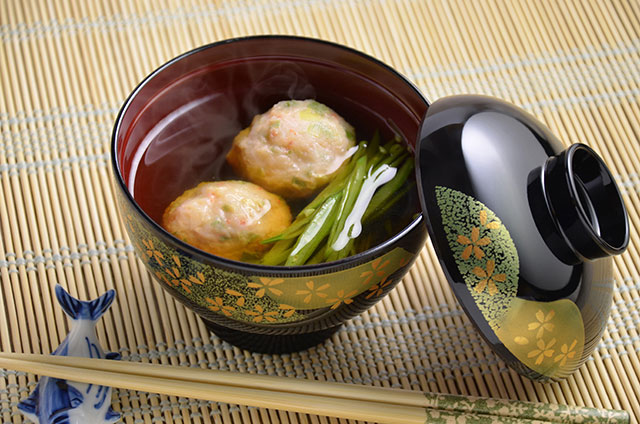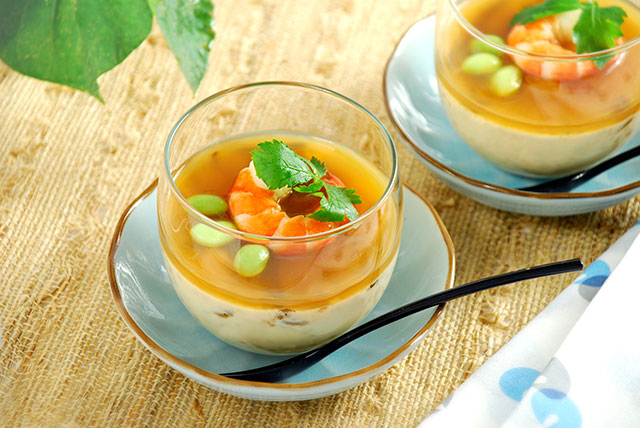
“Dashi is a subtle broth with the capacity to enhance and intensify the flavor of those foods with which it is cooked or blended. That ability is locked within kombu (kelp) and katsuo bushi (smoky bonito fish flakes), the two ingredients used to make this basic sea stock: Both are both rich in water-soluble glutamates.” – Elizabeth Andoh, author of Washoku and Kansha, and leading expert on Japanese cuisine
If umami represents the soul of Japanese cooking, then dashi certainly represents the heart, enhancing and harmonizing the flavors in many Japanese dishes. This month, we continue our series about umami with a tutorial about how to make dashi. We also feature recipes that use dashi, showcasing the breadth of dishes that rely on this essential ingredient.
In classical Japanese cooking, dashi is commonly made with water, kelp (konbu) and the shavings of dried, smoked skipjack tuna (bonito flakes or katsuobushi). Two types of dashi can be prepared from one batch of ingredients: ichiban dashi and niban dashi. Ichiban dashi is the first extraction of umami from the konbu and katsuobushi, resulting in a pale, clear and delicately fragrant broth. Niban dashi is the second extraction of umami from the leftover konbu and katsuobushi used to make ichiban dashi and results in bolder flavor. Japanese cooks use both types of dashi to flavor specific types of dishes and to fully utilize the ingredients without waste.

Ichiban dashi is simple to make, as long as a few techniques are followed with precision. To extract the full flavor-enhancing properties of the glutamate-rich ingredients, start with cold water. Place the water in a saucepan, along with a square piece of konbu. Heat the water over medium heat until just before it boils, when bubbles start to appear along the bottom and sides of the pan. Remove the konbu, and let the water come to a full boil. Removing the konbu at this precise time prevents the glutamates extracted from the seaweed from becoming bitter due to prolonged exposure to high heat. Remove the pan from the heat and allow the liquid to cool. Then, add the katsuobushi to the saucepan and heat the mixture again until it reaches a boil. Turn the heat off and let the bonito flakes steep in the liquid. Finally, strain the liquid through several layers of paper towel or cheesecloth, into a clean glass container, so that no small pieces of fish or seaweed are left in the broth to muddle the flavor.
This step-by-step recipe for Ichiban Dashi notes the actual proportions, temperatures and cooking times…and we know you’ll find it enjoyable to make!
Niban dashi is made using the already-cooked seaweed and fish left over from preparing ichiban dashi. Add both ingredients back into the saucepan, add a few cups of water, simmer the mixture for several minutes over low heat, then strain.
In the case of both ichiban and niban dashi, the keys to creating the best dashi lie in extracting and preserving the glutamates from the konbu and katsuobushi. Prolonged cooking, excessively high heat and inadequate straining can result in a dull and fishy broth that sullies, rather than enhances, the dishes that rely on dashi to infuse them with umami.

Ichiban dashi is used in many types of dishes, from soups to appetizers to salads. We have some great recipes that use ichiban dashi on our website, like Tofu Misoshiru, Shrimp Ball Broth, Hiyashi Chawanmushi and Crab & Cucumber Sunomono.
Bringing out the flavor of fresh, high-quality ingredients using umami-rich dashi is at the core of Japanese culinary tradition. We encourage you to make your own dashi, and as always, would love to hear about your experience!
Leave a Reply